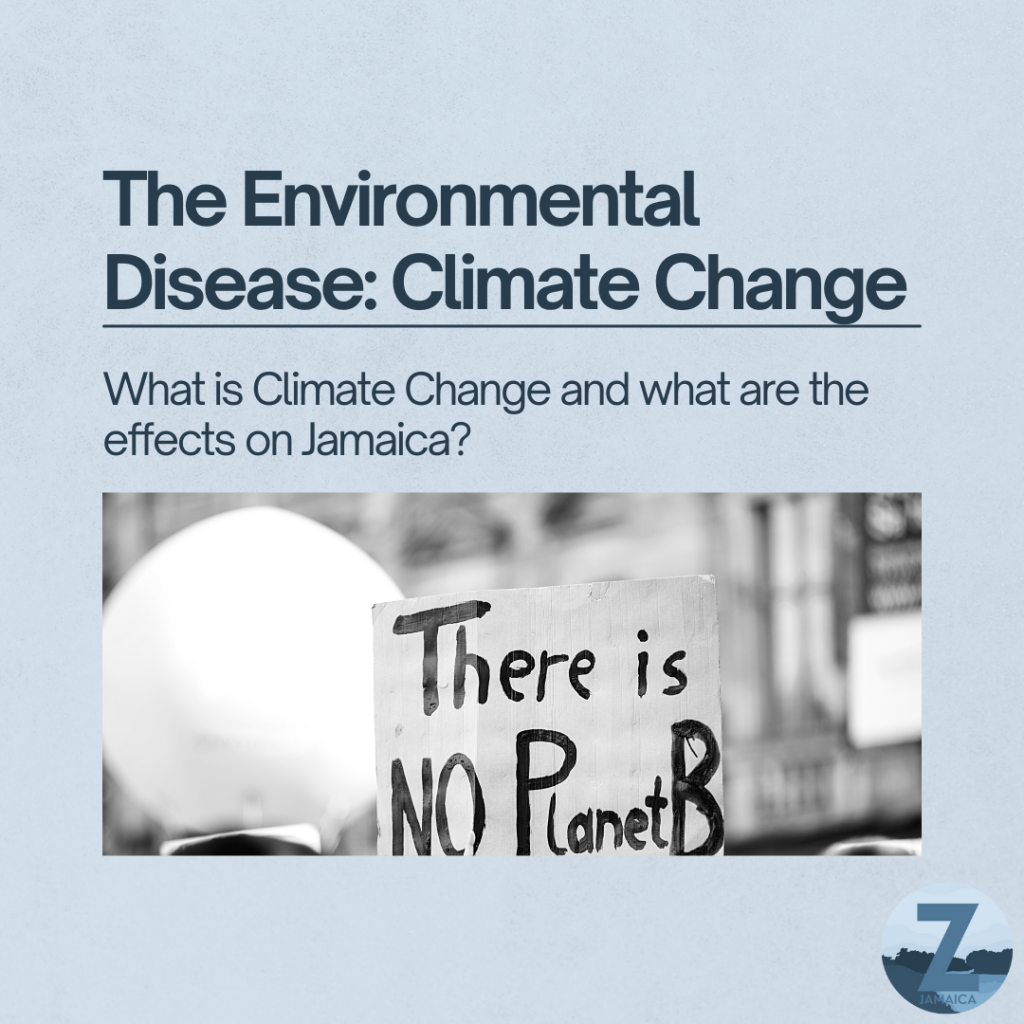by Tori-Ann Collier | March 4, 2022
Climate change is happening, humans are causing it, and I think this is perhaps the most serious environmental issue facing us. This quote by famous scientist and mechanical engineer, Bill Nye shows the extent to which climate change affects our society and the environment. But what exactly is climate?
Climate is sometimes mistaken for weather, but climate is different because it is measured over a long period of time, whereas weather can change from day to day, or from year to year. The climate of an area includes seasonal temperature, rainfall averages, and wind patterns.
With the definition of climate established you can now fully grasp the concept of climate change.
Climate change refers to the long-term changes in the climate that occur over decades, centuries or longer. It is affected by rapidly increasing greenhouse gases in the Earth’s atmosphere due primarily to burning fossil fuels (e.g., coal, oil, and natural gas).
CAUSES OF CLIMATE CHANGE
Currently, the main driver of climate change is the greenhouse effect. Some gases in the Earth’s atmosphere are similar to the glass of a greenhouse, trapping the sun’s heat and stopping it from returning to space and causing global warming.
Many of these greenhouse gases occur naturally, but human activity is increasing the concentrations of some of them in the atmosphere, in particular:
- carbon dioxide (CO2)
- methane
- nitrous oxide
- fluorinated gases
The world is now warming faster than at any point in recorded history. It is important as inhabitants of the earth to be more educated on issues involving our planet and ways in which we can help.
The major/most common causes of global warming include:
- Deforestation
Cutting down forests to create industrial buildings (or for other reasons) causes emissions, as trees, when cut, release the carbon they have been storing. Since forests absorb carbon dioxide, destroying them also limits nature’s ability to keep emissions out of the atmosphere.
- Burning fossil fuels
Fossil fuels such as oil, gas, and coal contain carbon dioxide that has been ‘locked away’ in the ground for thousands of years. When these are taken from the earth and burnt, they release the stored carbon dioxide into the air.Nearly 15 billion metric tons of fossil fuels are consumed every year.In 2017, 81 percent of the world’s consumed energy was oil, coal and natural gas. Three countries use more fossil fuels than the rest of the world combined: China, the United States and India.
- Farming
Local environments can be destroyed to create space for farming. Planting crops and rearing animals releases many different types of greenhouse gases into the air and these animals produce a lot of greenhouse gases and waste (for example: methane). Additionally, Factory Farming is responsible for even more climate issues because of the extra pollution it produces.
- Transportation
A large amount of transportation is done through cars, planes, boats and trains, almost all of which rely on fossil fuels to run. This makes transportation partly responsible for the greenhouse gases. This effect could be reduced with the introduction of electric vehicles.
The causes listed above make up only a small percentage of the human activities that cause climate change, and have harrowing effects on our planet.
EFFECTS OF CLIMATE CHANGE
Within the last few years, the effects of climate change on Jamaica have become more evident. However, the Government of Jamaica, through its various Ministries and Departments, has implemented measures to help reduce the effects of climate change.
Below are some of the ways in which climate change has affected Jamaica:
• More severe hurricanes
• Increase in heavy rainfall that leads to flooding
• Longer periods of drought
• Erosion of the shoreline
The impact of flooding is perhaps the most serious because of the devastating effects on community assets and livelihood. The impacts on the agricultural sector raise adverse implications for food security, farm income and the poverty levels of affected households and communities.
Climate change might seem like a tedious issue to some, but the effects it has on our communities is devastating. These effects may lead to greater issues such as a rise in taxes, unsafe living spaces and even food shortages for years in some countries.
The Jamaican government has brought forth strategies to help with climate change, as well as implemented many policies, despite the lack of cooperation from Jamaican citizens.
Some strategies that can assist in building resilience include:
- Better management of water resources
- Adopting sustainable farming practices
- Implementation of water harvesting resources
- Planting crops that can withstand erratic weather conditions
- Enforcing the proper disposal of garbage
At the policy level the Jamaican Government also:
• Signed to the Paris Agreement, which seeks to guide the treatment of climate change by limiting the rise of the global temperature below 2 ̊ Celsius
• Became a party to the United Nations Framework Convention on Climate Change which seeks to regulate Greenhouse Gas Emissions
• Implemented a Climate Change Focal Point Network (CCFPN) – a network which is comprised of representatives of over 27 Ministries and Agencies who are tasked with mobilising resources through the Climate Change Division of the Ministry of Economic Growth and Job Creation
• Partnered with the agencies, such as the United Nations Development Programme (UNDP) and the Japan- Climate Change Programme to create Mitigation Actions
• Supported the rehabilitation of the Montego Bay Breakwater Structures.
WAYS IN WHICH WE CAN HELP FIGHT AGAINST CLIMATE CHANGE
You might be thinking, ‘Climate Change is such a big environmental issue, there is probably nothing I could do to help.’ Well, you’re wrong.
The future of the earth is in our hands and there are many organizations that assist in the mitigation of climate change that accept numerous volunteers, yearly as well as small lifestyle changes that could help.
- Planting Trees
Planting trees helps reduce the amount of carbon dioxide in the atmosphere as trees absorb it as part of the process of photosynthesis. Through afforestation (planting trees) a greater proportion of carbon dioxide can be absorbed reducing greenhouse gasses in the atmosphere.
- Carpooling
Cars produce carbon dioxide, the heat-trapping gasses that cause global warming. By reducing fuel consumption, a number of studies have found that carpooling can reduce greenhouse gas (GHG) emissions.
- Stay informed
It is important to stay informed on issues regarding climate change, so you can properly educate others.The more people that are educated on this crisis the faster it is to help mitigate this issue.


Leave a comment